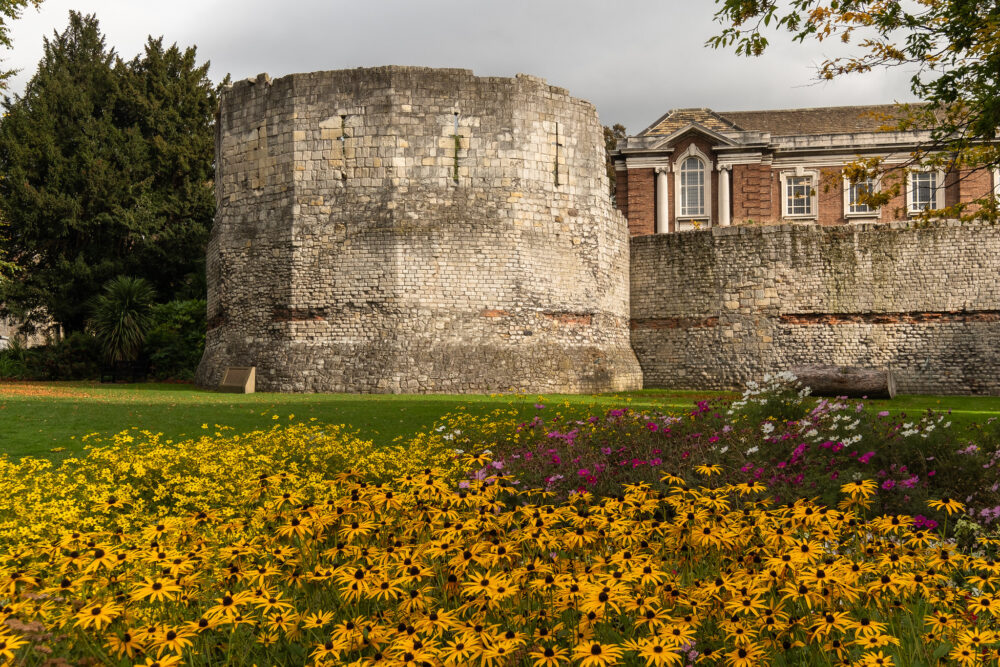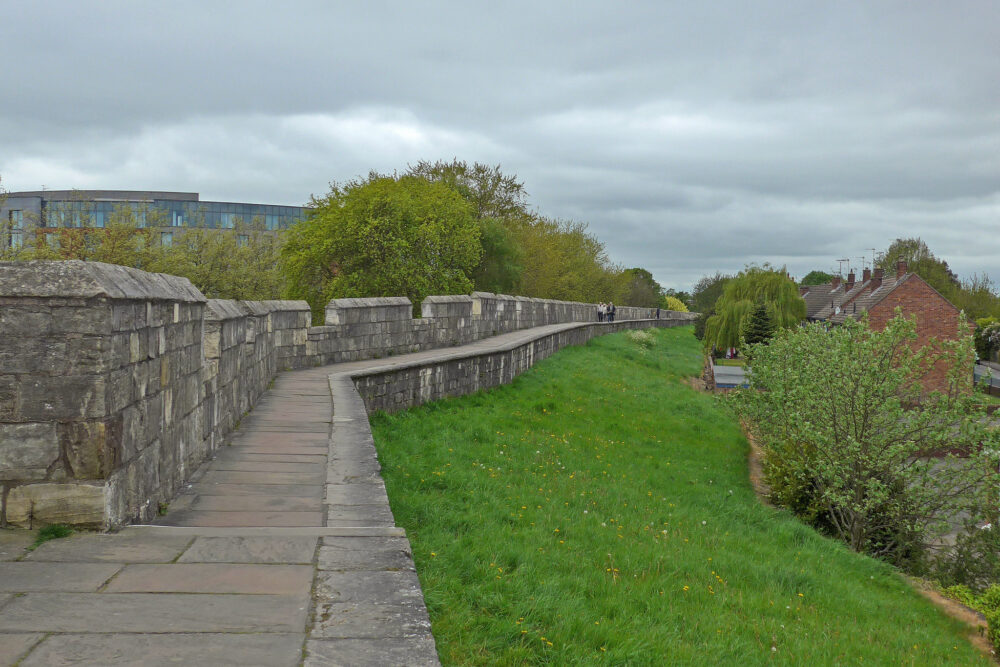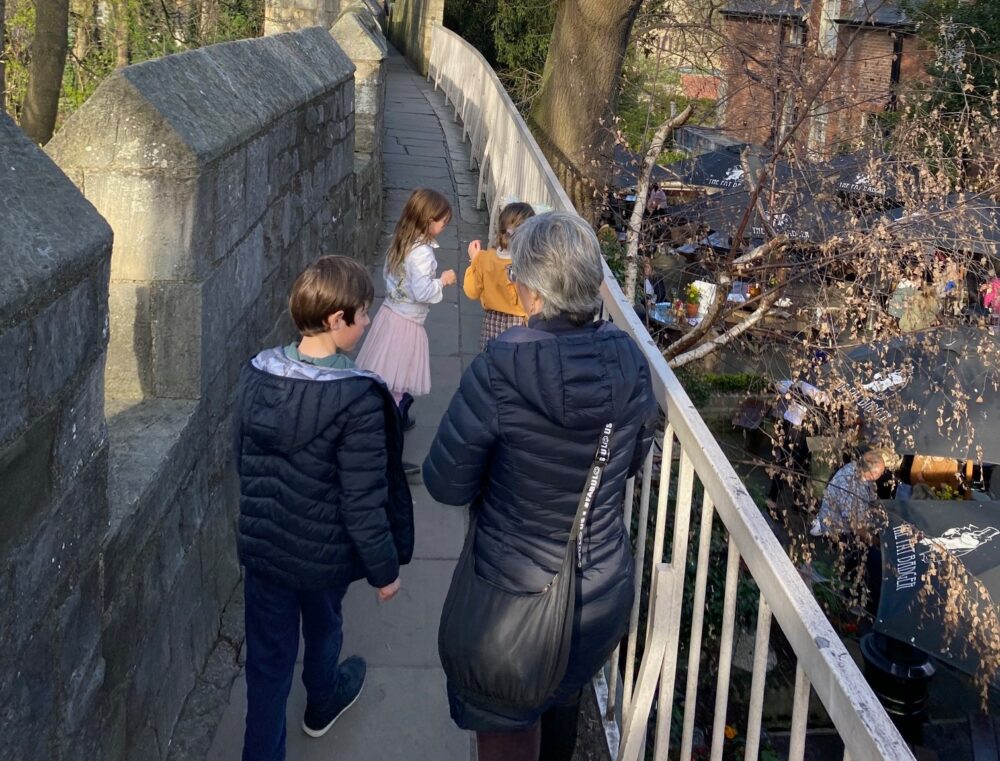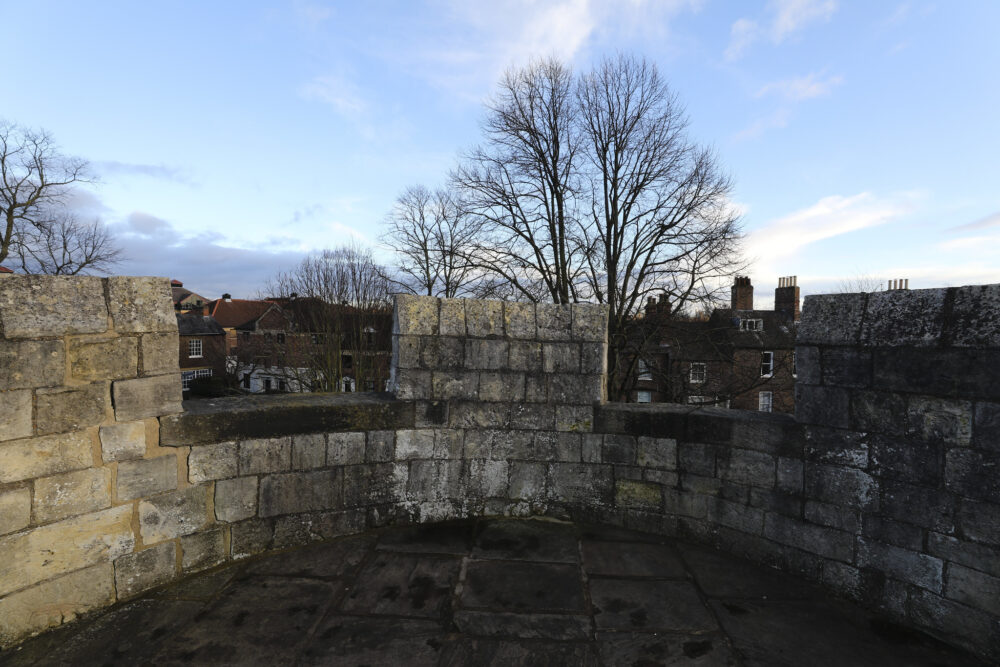No trip to the historic UK city of York is complete without walking at least a section of its ancient walls – and here’s a short guide on how best to do so.

(Photo: alh1 via Flickr / CC BY-ND 2.0)
A brief history
Originally built in 71 AD during Roman times, the York City Walls were later renovated and fortified under the Normans and continued to be extended all the way through to the 16th century, including being upgraded to stone in 1226. Today, the impeccably-preserved walls remain the longest of their vintage anywhere in England and one of the biggest tourist attractions in the city.
If you’re thinking of making a trip to the medieval city in northeast England, and want to include a walk along its remarkable walls during your stay, we’ve created a quick guide to help you plan your visit.

The Multangular Tower, York’s best preserved Roman tower (Photo: alh1 via Flickr / CC BY-ND 2.0)
When and how to access the walls
Spanning some 2.5 miles, the walls are open to the public from dawn until dusk each day, meaning that the exact opening hours will often depend on the time of year. There are numerous entry points to the walls all around the city, and admission is completely free of charge and non-supervised, meaning you can ‘hop on’ and ‘hop off’ as you please, maybe even splitting your visits up over a couple of days to make it manageable – especially if you’ve got kids in tow.

(Photo: Tim Green via Flickr / CC BY 2.0)
What to look out for
Visitors can walk along the circular walls, which enclose the historic part of the city, stopping to admire the various points of interest, such as the four main fortified gateways (known as ‘bars’), and enjoy beautiful views of the city as they go. There are also benches at several of the towers should you need a rest or just an excuse to sit down and soak up the scenery.
The main gates into the city are Bootham Bar, Monk Bar, Walmgate Bar and Micklegate Bar, all mostly constructed in the 14th century with later additions. Micklegate is the most infamous of these, as it was the site of Richard, Duke of York’s execution in 1461, and his head was displayed there for all to see. Micklegate is now home to the interactive Henry VII Experience, while Monk Bar houses his rival, the Richard III Experience – both of which can be booked in advance.

(Photo: Paul Joseph
All the way along the walls there are checkpoints and each point of interest has posters delving into the history of the York walls and a map to guide you in the right direction. Many visitors also like to stop to see the many intriguing details such as arrow slits, musket loops, sculptures and masons’ marks that are dotted along the route.

(Photo: bryan… via Flickr / CC BY-SA 2.0)
For more information about the York City Walls, check out www.yorkwalls.org.uk, which is run by The Friends of York Walls, formed in 2011 by a group of local residents with the aim of providing the landmark with more support and promotion.